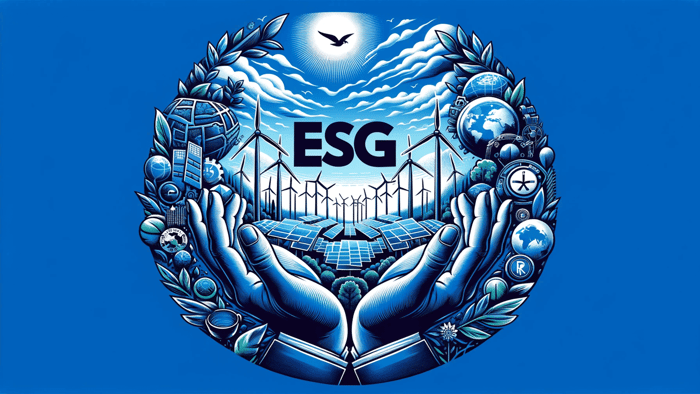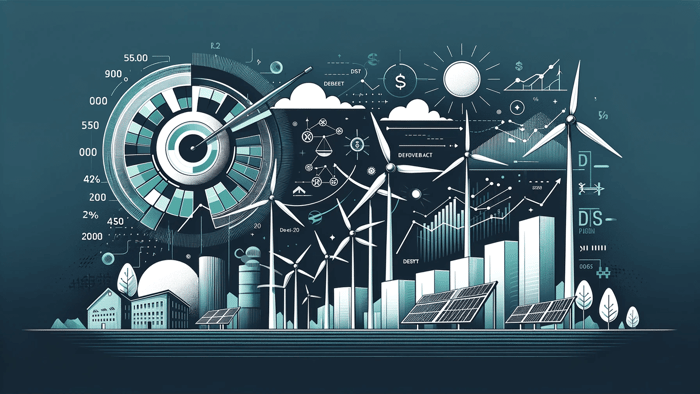An ESG (Environmental, Social, and Governance) analyst is responsible for analyzing and evaluating companies or investments based on ESG criteria. The primary goal of an ESG analyst is to determine the environmental, social, and governance impact of a company, industry, or investment opportunity and identify potential risks and opportunities associated with them.
The day-to-day tasks of an ESG analyst may include:
1. Gathering data on companies' ESG performance and practices through company disclosures, media reports, and other sources.
2. Conducting ESG research and analysis to assess the sustainability and ethical impact of investments or companies.
3. Creating ESG reports and recommendations for investors, clients, and stakeholders.
4. Collaborating with other analysts, portfolio managers, and investment teams to incorporate ESG considerations into investment decision-making.
5. Engaging with companies to promote ESG best practices and advocate for positive change.
6. Keeping up to date with ESG trends, regulations, and industry developments.
Overall, an ESG analyst plays a crucial role in helping investors and companies make informed decisions that align with their values and contribute to a more sustainable and responsible world.
The Role of ESG Analysts in the Renewables and Financing Sector
Environmental, Social, and Governance (ESG) analysts have emerged in the rapidly evolving landscape of the renewable energy sector, bridging the gap between sustainable investment and the urgent need for clean energy solutions. Their expertise plays a critical role in steering capital towards projects and companies that not only promise attractive financial returns but also contribute positively to environmental conservation, social equity, and effective governance.
ESG analysts in the renewables financing sector specialize in evaluating energy projects and companies for their alignment with sustainability goals. They assess factors such as the environmental impact of renewable energy projects, the social implications of their implementation (including community engagement and labor practices), and the governance structures that oversee project development and execution. This comprehensive analysis helps identify investments that are not only financially viable but also sustainable and ethically sound.
A significant part of an ESG analyst's role involves due diligence and risk assessment. By meticulously analyzing the ESG credentials of renewable energy investments, analysts can pinpoint potential risks that might not be evident through financial analysis alone—such as regulatory changes, reputational damage from poor social practices, or environmental degradation. This foresight enables investors to mitigate risks before they materialize, safeguarding both their financial interests and their commitment to sustainability.
Moreover, ESG analysts are at the forefront of promoting transparency and accountability in the renewable energy sector. They advocate for robust ESG reporting standards and engage directly with companies to encourage the adoption of sustainable practices. Through their efforts, analysts help build investor confidence, which is crucial for attracting the significant capital required to transition to a low-carbon economy.
As the renewable energy sector continues to grow, the role of ESG analysts is becoming increasingly indispensable. They not only guide investment toward projects that are likely to succeed in a transitioning energy market but also ensure that these investments contribute to the broader goals of environmental sustainability and social responsibility. In doing so, ESG analysts are instrumental in shaping a future where finance serves as a powerful catalyst for positive change in the energy landscape.
Comparing ESG Standards and Policies: Europe vs. the United States
Environmental, Social, and Governance (ESG) standards and policies vary significantly between Europe and the United States, reflecting different regulatory approaches, cultural attitudes towards sustainability, and market dynamics. Here's an overview of the ESG landscape in both regions:
Europe
Europe is considered a global leader in ESG regulation and standards, with the European Union (EU) actively implementing policies to integrate sustainability into financial and corporate practices:
EU Sustainable Finance Disclosure Regulation (SFDR): This regulation was introduced to increase transparency in how financial market participants consider ESG factors in their investment decisions, requiring them to disclose how they integrate ESG risks and opportunities.
EU Taxonomy Regulation: A classification system establishing a list of environmentally sustainable economic activities. It aims to provide a common language and transparent criteria for determining whether an economic activity is environmentally sustainable.
Non-Financial Reporting Directive (NFRD): Requires large companies to disclose non-financial and diversity information, including how they operate and manage social and environmental challenges.
Corporate Sustainability Reporting Directive (CSRD): An evolution of the NFRD, expanding the scope to include all large companies and all companies listed on regulated markets (except listed micro-enterprises), requiring more detailed reporting and adherence to mandatory EU sustainability reporting standards.
Green Bond Standard: The EU has proposed a voluntary standard for issuing green bonds, which are financial instruments designed to raise funds for sustainable environmental projects.
United States
The United States has historically had a more market-driven approach to ESG, with standards and policies evolving more from investor demands and corporate initiatives rather than comprehensive federal mandates:
Securities and Exchange Commission (SEC) ESG Disclosures: The SEC has been moving towards requiring more comprehensive ESG disclosures from public companies, focusing on how climate risks affect their operations and financial health. This includes the proposal of rules aimed at enhancing and standardizing climate-related disclosures for investors.
Sustainable Finance Executive Order: In 2021, President Biden signed an executive order on climate-related financial risk, directing federal agencies to analyze and mitigate the risks climate change poses to the financial system and federal government.
Task Force on Climate-Related Financial Disclosures (TCFD): While not a government body, TCFD recommendations have gained traction among U.S. companies for climate-related financial risk disclosures.
ESG-related shareholder proposals: In the absence of broad regulatory requirements, there has been a significant increase in shareholder proposals at U.S. companies related to ESG issues, pushing for more transparency and action on sustainability practices.
Conclusion: ESG Standards and Policies in Europe and the United States
While Europe has taken a more regulatory and comprehensive approach to ESG standards and policies, the U.S. is increasingly recognizing the importance of ESG considerations in the financial and corporate sectors, largely driven by market forces, investor demands, and evolving regulatory guidance. The differences between the two regions highlight the diverse ways in which ESG can be integrated into the broader economic and financial ecosystem, with each approach reflecting local priorities, challenges, and opportunities in addressing sustainability and governance issues.
Project Finance Modeling – A core skill required as an ESG analyst
Project finance modeling can play an essential role in the job of an ESG analyst, particularly when assessing the sustainability and social impact of infrastructure projects. Project finance modeling involves creating financial models tailored to specific projects, such as renewable energy or social infrastructure projects.
As an ESG analyst, project finance modeling can help you evaluate the financial viability of a project and the potential social and environmental impact it may have. For example, you could use solar project finance modeling to estimate the expected cash flows and financial returns of a renewable energy project while also assessing the potential environmental benefits of the project, such as reduced greenhouse gas emissions.
In addition, project finance modeling can help you identify potential risks and opportunities associated with ESG factors that may impact the financial performance of the project. For example, you may need to consider the impact of regulatory changes or changing consumer preferences on the project's long-term financial viability.
Overall, project finance modeling can be a valuable tool for ESG analysts, as it allows them to assess the financial and non-financial impact of infrastructure projects and make informed investment decisions that align with ESG principles.
Enhance your organization's decision-making process with a comprehensive financial model dashboard.
If you're looking to invest in renewable energy, you need a comprehensive financial model dashboard that summarizes all the key investment metrics relevant to your decision-making process.
This financial model dashboard for renewable energy investments is designed to help you make informed investment decisions with ease. It includes a detailed breakdown of the project's capital structure, allowing you to understand the financing mix of the project and the risks associated with each layer of the capital stack.
The dashboard also considers critical investment metrics such as IRR and NPV on both a levered and unlevered basis, giving you a complete picture of the project's profitability.
In addition to these essential investment ratios and multiples, the dashboard details the payback periods, CFADS/EV, Revenue/EV, EV/MWp, and EV/MWh. These metrics are crucial in evaluating the financial viability of the project and determining its potential for generating returns over the long term.
The dashboard also features eye-catching charts that provide a visual representation of the project's cash flow generation over its entire asset lifetime. This feature will give you valuable insights into the project's cash flow patterns and help you make informed investment decisions.
With all these critical investment metrics and data points in one place, this financial model dashboard is the ultimate tool for renewable energy investment decision-makers.






